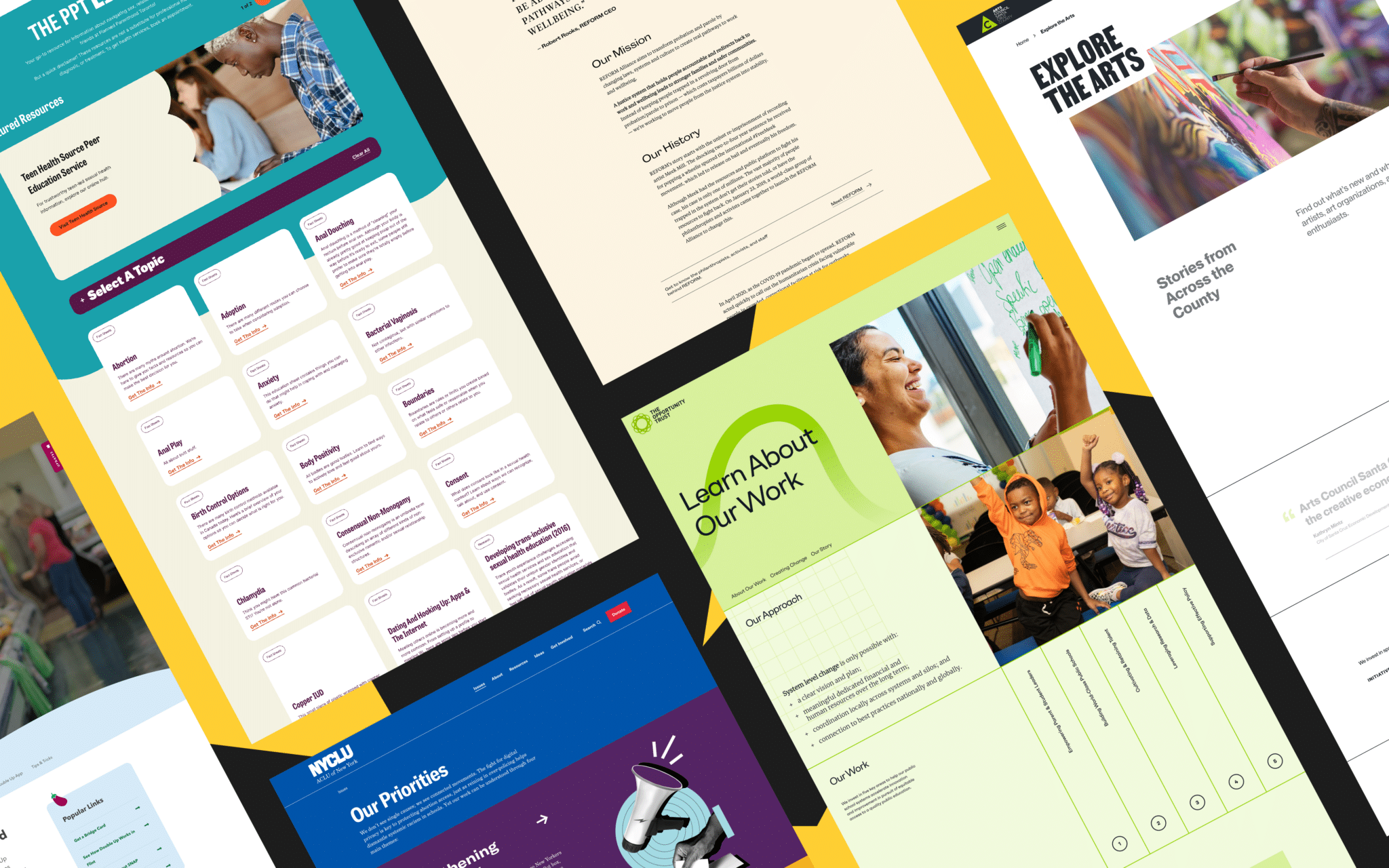Why Responsive Website Design is Essential for Today's Digital Market
Why Responsive Website Design is Essential for Today's Digital Market
Blog Article
The Ultimate Guide to Modern Website Design Trends
In the ever-evolving digital landscape, contemporary internet site design patterns play a crucial function in forming customer experience and involvement. From the rise of minimalist style principles that focus on simpleness to the impact of bold typography in specifying brand name identity, each element contributes to a natural on-line existence.
Minimalist Layout Concepts
Minimalist style concepts emphasize the concept that much less is much more, advocating for simpleness and functionality in aesthetic interaction. This strategy remove unnecessary elements, focusing instead on crucial parts that convey the desired message successfully. By focusing on clarity, minimal style boosts customer experience, permitting visitors to navigate internet sites easily.
Core tenets of minimal style consist of using enough white room, which develops a feeling of balance and company. This adverse space not just directs the visitor's focus to key elements yet also promotes a soothing aesthetic ambience. In addition, a restricted color combination is frequently utilized, making use of single systems or soft tones to maintain visual cohesion and stop frustrating the user.
Typography plays a vital function in minimalist style, where clear fonts are selected for their simplicity and effectiveness in interacting web content. Inevitably, minimalist style concepts cultivate a concentrated setting that encourages customers to involve with the material, improving the total performance of modern site style.
Strong Typography Choices
Embracing bold typography options has ended up being a specifying attribute of modern website style, as it efficiently captures interest and shares strong messaging. Developers are increasingly using typography not simply as a functional element but as a vital visual component that boosts the total aesthetic and customer experience.

Furthermore, the association of bold typography with minimalist layout principles enables striking contrasts, enhancing readability while preserving aesthetic allure. Using whitespace around vibrant text better stresses its significance, ensuring that the message reverberates with the target market.
As digital landscapes come to be extra competitive, leveraging strong typography allows brand names to separate themselves and leave a long lasting impact. The mindful selection of fonts and their application can stimulate emotions, develop tone, and drive activity, making vibrant typography a crucial device in modern-day internet site style. Inevitably, it is an effective method to boost narration and make sure that essential messages are not only seen but also felt.
Mobile-first and responsive Design
Responsive and mobile-first design has become an essential concept in contemporary web site advancement, mirroring the boosting dependence on smart phones for accessing online material. As customer actions changes towards mobile surfing, designers need to focus on producing experiences that adjust flawlessly across various screen dimensions and resolutions.
A responsive layout makes certain that a web site immediately adjusts its page layout, images, and performance based on the device being utilized. Mobile-first style advocates for creating web sites initially for smaller sized displays, ultimately scaling up to bigger screens.
Executing responsive and mobile-first concepts not only satisfies customer preferences however also straightens with seo (SEARCH ENGINE OPTIMIZATION) techniques. Major online search engine, like Google, prioritize mobile-friendly web sites in their positions, making it crucial for organizations to take on these style approaches. In a competitive digital landscape, embracing mobile-first and responsive design is not simply a choice; it is crucial for ensuring availability and involvement with a varied audience.
Involving Microinteractions
Microinteractions play a crucial duty in enhancing user engagement and total website experience, especially in the context of mobile-first and receptive layout. These subtle design elements provide immediate responses to individuals, making interactions more satisfying and user-friendly. Instances consist of button animations, notice notifies, and filling signs, which not only overview individuals however also produce a sense of link with the user interface.
Incorporating interesting microinteractions can substantially enhance use by minimizing cognitive tons. When individuals get aesthetic or auditory responses upon executing activities, such as clicking a button or submitting a form, they really feel a lot more positive in their choices. This promotes a smoother navigating experience, ultimately boosting individual retention.

As website style trends remain to advance, the value of microinteractions Read Full Article can not be overstated. They act as the subtle yet effective touchpoints that change ordinary interactions into extraordinary experiences, thus boosting the total effectiveness of modern website design.
Sustainable Website Design Practices
Lasting internet design methods are becoming significantly crucial as the digital landscape grows and environmental issues climb. Designers and developers are acknowledging their responsibility to develop web sites that not just offer customer demands yet likewise reduce ecological impact. This strategy encompasses numerous key strategies.
First of all, maximizing power consumption is paramount. Web sites should be made to load promptly and successfully, which minimizes web server power use and improves customer experience. Techniques such as image compression, lessening HTTP demands, and using modern-day coding practices add significantly to this goal.
Secondly, choosing green organizing carriers is critical - website design. Several hosting companies are currently powered by renewable resource resources, allowing sites to operate see this website in a much more sustainable manner. This option reflects a commitment to reducing carbon impacts
Furthermore, taking on a minimalist style can enhance sustainability. Less aspects on a page result in much less information transfer, which not just accelerates packing times however additionally saves sources.
Lastly, advertising electronic ease of access makes sure that websites get to a larger target market without unnecessary bloat, straightening customer experience with ecological obligation. By incorporating these lasting methods, web developers can contribute favorably to both individual involvement and the earth's health.
Verdict
In summary, contemporary web site design patterns emphasize the integration of minimalist concepts, strong typography, and responsive design to boost customer experience. Adopting these fads is necessary for developing impactful electronic experiences that reverberate with customers in a progressively affordable on-line landscape.
In the ever-evolving electronic landscape, contemporary web site design fads play a critical role in shaping user experience and involvement. By prioritizing clearness, minimal layout boosts customer experience, allowing site visitors to navigate internet sites easily.
Ultimately, minimalist design concepts cultivate a concentrated environment that encourages individuals to involve with the material, boosting the total effectiveness of modern web site design.Microinteractions play an essential role in improving individual engagement and overall site experience, specifically in the context of mobile-first and responsive layout.In recap, contemporary internet site layout trends highlight the integration of minimalist concepts, bold typography, and responsive design to improve customer experience.
Report this page